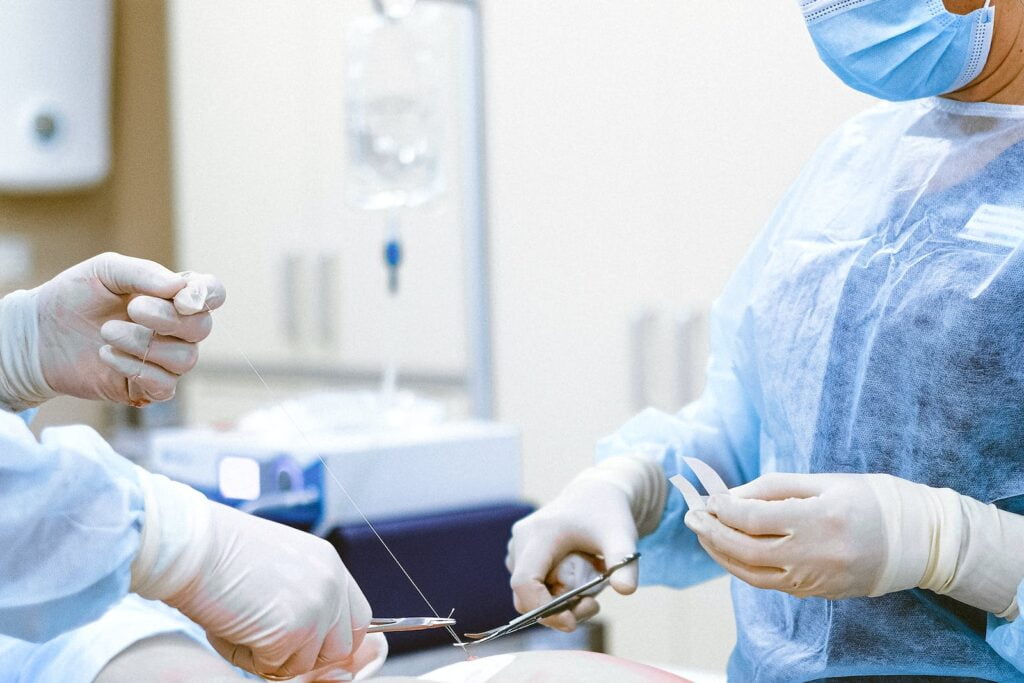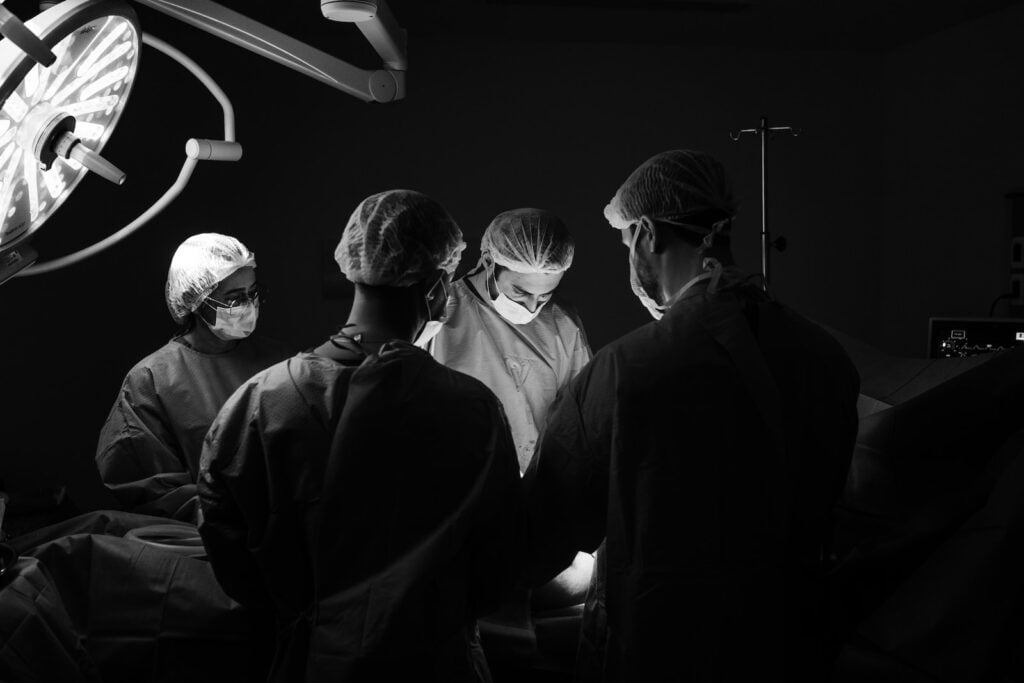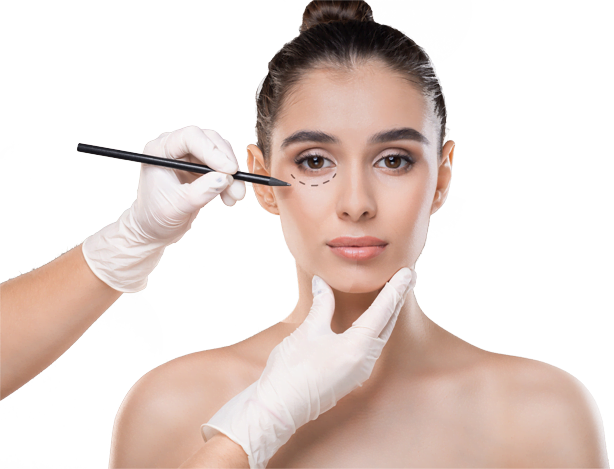Are you looking for a way to rejuvenate your face and restore your youthful appearance? Do you want to get rid of sagging cheeks, deep nasolabial folds, and hollow eyes? If so, you might be interested in an endoscopic cheek lift, a minimally invasive procedure that can lift and tighten your midface area with minimal scarring and downtime.
Table of Contents
What is an endoscopic cheek lift?
An endoscopic cheek lift is a type of facelift that focuses on the midface region, which includes the cheeks, the lower eyelids, and the nose. Unlike a traditional facelift, which involves long incisions along the hairline and behind the ears, an endoscopic cheek lift uses small incisions hidden in the scalp, temple, and mouth. Through these incisions, a surgeon inserts a thin tube with a tiny camera (endoscope) and special instruments to manipulate the underlying tissues and muscles of the face. The surgeon then elevates and repositions the cheek fat pads, smooths out the wrinkles and folds around the nose and mouth, and restores the volume and contour of the eyes.

What are the benefits of an endoscopic cheek lift?
An endoscopic cheek lift has many advantages over other facial rejuvenation procedures, such as:
- Minimal scarring: Because the incisions are small and hidden, there is less risk of visible scars or hair loss. The scars usually fade over time and become barely noticeable.
- Maximum impact: An endoscopic cheek lift can dramatically improve the appearance of the midface by lifting the sagging cheeks, reducing the nasolabial folds, enhancing the cheekbones, opening up the eyes, and creating a more youthful and refreshed look.
- Shorter recovery time: An endoscopic cheek lift is less invasive than a traditional facelift, which means less swelling, bruising, bleeding, and pain. The recovery time is usually one to two weeks, compared to four to six weeks for a traditional facelift. You can resume your normal activities sooner and enjoy your results faster.
- Long-lasting results: An endoscopic cheek lift can last for 10 years or more, depending on your skin quality, lifestyle, and aging process. You can maintain your results by following a healthy diet, avoiding sun exposure, using moisturizers and sunscreen, and having touch-up treatments as needed.

How to prepare for an endoscopic cheek lift?
Before you decide to have an endoscopic cheek lift, you should consult with a board-certified plastic surgeon who has experience in performing this procedure. The surgeon will evaluate your facial anatomy, skin condition, medical history, and aesthetic goals. They will also explain the risks, benefits, costs, and expectations of the procedure. You should ask any questions you have and make sure you understand everything before signing a consent form.
To prepare for an endoscopic cheek lift, you should follow these steps:
- Stop smoking at least two weeks before the surgery, as smoking can impair healing and increase complications.
- Avoid taking aspirin, anti-inflammatory drugs, herbal supplements, and other medications that can increase bleeding or interfere with anesthesia.
- Arrange for someone to drive you home after the surgery and stay with you for the first night.
- Follow your surgeon’s instructions on what to eat and drink before the surgery. You may need to fast for several hours beforehand.
- Pack a bag with comfortable clothes, toiletries, medications, ice packs, pillows, and books or magazines to keep you entertained during your recovery.
What to expect during and after an endoscopic cheek lift?
An endoscopic cheek lift is usually performed under general anesthesia or local anesthesia with sedation. The surgery takes about two to three hours to complete. During the surgery:
- Your surgeon will make small incisions in your scalp, temple, and mouth.
- Your surgeon will insert an endoscope through one of the incisions to view the underlying structures of your face on a monitor.
- Your surgeon will use special instruments to lift and reposition your cheek fat pads, smooth out your nasolabial folds, enhance your cheekbones, and restore your eye volume.
- Your surgeon will close the incisions with sutures or staples.
- Your surgeon will apply bandages or dressings to protect your wounds.
After the surgery:
- You will be taken to a recovery room where you will be monitored for any complications.
- You may feel some discomfort, tightness, numbness, or tingling in your face. Your surgeon will prescribe painkillers and antibiotics to ease your pain and prevent infection.
- You may have some swelling, bruising, redness, or bleeding in your face. These are normal side effects that will subside gradually over time. You can use ice packs or cold compresses to reduce inflammation.
- You may have some drainage tubes or drains attached to your face to collect excess fluid or blood. These will be removed after a few days.
- You may have some stitches or staples in your scalp, temple, or mouth. These will be removed after a week or two.
- You should keep your head elevated and avoid bending, lifting, or straining for the first few days. This will help reduce swelling and promote healing.
- You should avoid touching, rubbing, or applying pressure to your face for the first few weeks. This will help prevent infection and scarring.
- You should avoid sun exposure, smoking, alcohol, and strenuous activities for the first few weeks. These can delay healing and affect your results.
- You should follow your surgeon’s instructions on how to care for your wounds, how to take your medications, and when to return for follow-up visits.
What are the possible risks and complications of an endoscopic cheek lift?
An endoscopic cheek lift is a safe and effective procedure that can improve your facial appearance and boost your self-confidence. However, like any surgery, it has some potential risks and complications that you should be aware of. These include:
- Infection
- Bleeding
- Hematoma (a collection of blood under the skin)
- Seroma (a collection of fluid under the skin)
- Nerve damage
- Facial asymmetry
- Facial paralysis
- Scarring
- Hair loss
- Skin necrosis (skin death)
- Allergic reaction to anesthesia or medications
- Unsatisfactory results
- Need for revision surgery
These risks and complications are rare and can be minimized by choosing a qualified and experienced surgeon, following their preoperative and postoperative instructions, and reporting any problems or concerns as soon as possible.
Conclusion
An endoscopic cheek lift is a minimally invasive procedure that can lift and tighten your midface area with minimal scarring and downtime. It can rejuvenate your face and restore your youthful appearance by lifting the sagging cheeks, reducing the nasolabial folds, enhancing the cheekbones, and restoring the eye volume. It has many benefits over other facial rejuvenation procedures, such as minimal scarring, maximum impact, shorter recovery time, and long-lasting results. It is suitable for people who have mild to moderate signs of aging in the midface region and who want to improve their facial harmony and balance. If you are interested in an endoscopic cheek lift, you should consult with a board-certified plastic surgeon who can assess your eligibility, explain the procedure, and answer your questions.
FAQ
Here are some frequently asked questions about an endoscopic cheek lift:
Q: How much does an endoscopic cheek lift cost?
A: The cost of an endoscopic cheek lift varies depending on several factors, such as the surgeon’s fees, the anesthesia fees, the facility fees, the geographic location, and the extent of the procedure. According to the American Society of Plastic Surgeons (ASPS), the average cost of a cheek lift in 2020 was $3,153. However, this does not include other expenses, such as medications, bandages, or tests. You should ask your surgeon for a detailed estimate of the total cost before booking your surgery.
Q: How long does it take to see the results of an endoscopic cheek lift?
A: The results of an endoscopic cheek lift are not immediate. You will need to wait for the swelling and bruising to subside before you can appreciate your new look. This may take several weeks or months. You will also need to wait for the scars to fade and mature. This may take up to a year or more. The final results of an endoscopic cheek lift are usually visible after six months to a year.
Q: How do I choose a good surgeon for an endoscopic cheek lift?
A: Choosing a good surgeon for an endoscopic cheek lift is very important for ensuring a safe and successful outcome. You should look for a surgeon who:
- Is board-certified by the American Board of Plastic Surgery (ABPS) or equivalent in your country.
- Has extensive training and experience in performing endoscopic cheek lifts and other facial plastic surgeries.
- Has a good reputation and reviews from previous patients.
- Has a portfolio of before-and-after photos of endoscopic cheek lifts that you can review.
- Has a well-equipped and accredited surgical facility that meets safety standards.
- Has a friendly and professional staff that can assist you throughout the process.
- Listens to your needs and expectations and provides honest and realistic advice.
You should also feel comfortable and confident with your surgeon and trust them with your face.

